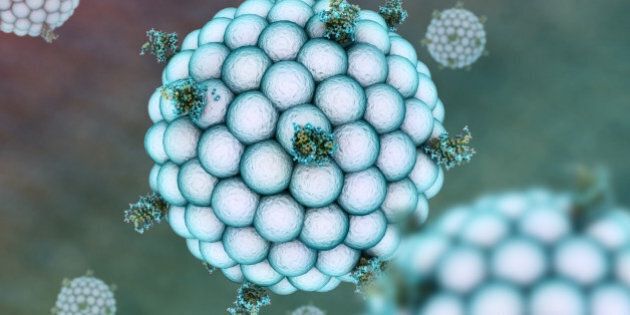
What's the best way to combat a bacterial infection?
For decades, the answer has been relatively straightforward: take an antibiotic. But over the last twenty years, that option has become substantially less effective as a result of antibiotic resistance. The situation is now so widespread even the mention of a new resistance gene can sound a worldwide alarm.
As a result of the impending post-antibiotic era, the hunt for antibiotic alternatives has become a global effort. Synthetic chemistry has been at the forefront of this effort but many scientists have also put a variety of natural products to the test. One of these happens to be a chemical known as polylactic acid. It's a long chain of lactic acid, a known antimicrobial preservative with a rather interesting trait. When used right, it can form a highly effective antimicrobial nanoparticle.
The mere mention of nanotechnology may raise eyebrows. Yet worries should not be based on size but molecular composition instead. If a particle is made from plastic or heavy metals, concern is definitely valid. However, polylactic acid nanoparticles are biodegradable, making them perfect for use both in the environment and also in the body.
The method to making an excellent nanoparticle involves using a natural compound, like lactic acid, to develop larger polymers. Once they have been made, they tend to be sticky allowing them to attach to other molecules, such as a drug or a molecule associated with cancerous tumours tumour or bacterial infections.
When inserted into the human body, the nanoparticles swim around harmlessly until they find the right target. At this point, the drug does its job and the process is complete. As for the nanoparticle, it is usually digested by the body and eventually released in the urine.
There is one catch to this. In order to make nanoparticles, chemicals such as detergents are sometimes necessary. This can potentially increase the chances for toxicity. But there may be a better way forward thanks to a recent study from a European group. They have developed a method to make antimicrobial nanoparticles using a more natural method. Instead of using synthetic chemicals, they use an unlikely candidate: lemongrass oil.
Lemongrass itself is an antimicrobial but this wasn't the reason behind the decision. The oil has the ability to make polylactic acid nanoparticles. For the researchers, this was their best hope to show how the combination of chemistry and nature could work to our benefit.
The process was relatively straightforward. The team took polylactic acid and then added lemongrass oil to form particles. However, these particles were not round spheres. Instead, the end product was capsular. The oil fused the particles together and also was contained within the inner space. The group had developed what was in effect a microscopic version of the oil pills found in drug stores.
Once the capsules were collected, they were put to a variety of tests against several pathogenic bacteria including Staphylococcus aureus, Pseudomonas aeruginosa, and Escherichia coli. They even tried to kill the infamous yeast, Candida albicans. The methods were performed on surfaces, in liquid, and also on already grown populations of these organisms, better known as biofilms.
When the results came back, the team knew they had a winner. In all the tests, the nanoparticles performed exactly as expected. The effect was as good if not better than polylactic acid particles made the old-fashioned way. Lemongrass proved to be the perfect choice.
There was, however, one last need in order to call this study a complete success. The nanoparticles had to be non-toxic. To test this, the researchers used some of the most vulnerable cells known to exist: amniotic stem cells. If they could survive treatment, then there was no doubt the particles would be safe.
The test was run for three days, which would account for far more than the time needed to biodegrade the particles in the body. By the end of the test, the results were better than expected. The introduction of the lemongrass-formed particles actually improved the growth of the cells in comparison to the controls. The technique was safe.
For the authors, this study demonstrates the potential to explore novel routes to combat bacterial and yeast infections. While nanoparticles may be scrutinized, the use of natural synthesizing compounds like lemongrass oil show there is a better way. Though the process to use these options in humans has just begun, there is hope this technique may offer yet another option to combat antibiotic resistant infections and ensure people can recover quickly and most importantly, safely.
Follow HuffPost Canada Blogs on Facebook